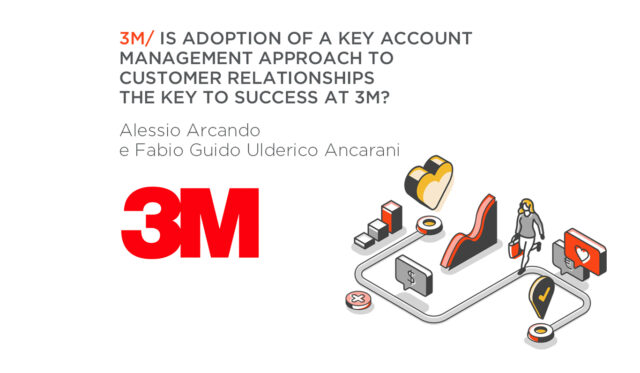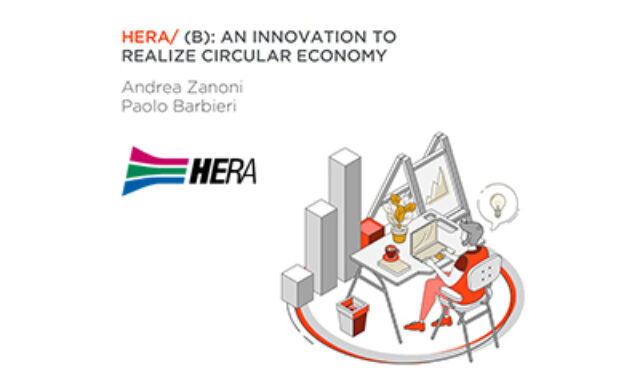In the field of industrial production, adaptability and innovation are key elements. The IMA Group, a world leader in the design and manufacture of automatic machines for the processing and packaging of pharmaceutical, cosmetic and food products, demonstrated these qualities during the economic crisis of 2009. The management of the crisis by the company, the organization of production and the restructuring of the supply chain became a Bologna Business School case study in which the Group’s strategic decisions and growth dynamics were examined. The case study, designed especially for MBA and Executive MBA courses, goes beyond the simple “Make or Buy” decision to provide a detailed analysis of the industrial strategy and decision-making process and offer insights into issues such as resilience, innovation, and growth.
Founded in 1961, the IMA Group has grown to employ 6,200 people, own 48 production facilities and export to nearly 80 countries. In 2019, worldwide sales reached 1,595.5 million euros, with 88 percent of total revenues coming from abroad. The company holds more than 1,700 patents worldwide and boasts the widest range of state-of-the-art automatic processing and packaging systems. All this in an extremely competitive and complex market environment, in which Europe, with Germany and Italy at the forefront, holds a solid lead: in 2008, Germany and Italy exported 4.2 and 2.8 billion euros, respectively. It should also be pointed out that this type of industry involves intricate systems of interactive parts, produced by both large multinationals and specialized local companies. These include leading companies such as IMA, Coesia and Marchesini, which are based in Emilia-Romagna and form an integrated manufacturing cluster. The manufactured machines are used in different industries, such as the food, pharmaceutical and cosmetic sectors, and must meet different requirements such as speed, reliability, ease of use, flexibility and aesthetics. Technology varies in terms of complexity and profitability across industries, with pharmaceutical packaging lines being more complex than those for food. The relationship structure in this context is critical, with large and small firms coexisting with and being indispensable to each other, and with leading firms typically focusing on core activities such as product conception, line design, technological development, final assembly, and customer services. Whereas, small and medium-sized companies, often located close to customers, supply individual machines, functional assemblies or components. The scale of production, the need to integrate different technologies, and the breadth of skills required are barriers to entry, and orders for technical parts are often small. Investments in advanced design tools and cutting-edge technologies such as mechatronics, extended data management, and artificial intelligence are essential to produce state-of-the-art automated machines that enable customers to align with the Industry 4.0 perspective.
In 2008, Alberto Vacchi, Chairman of IMA, was faced with a critical decision on how to organize production and restructure the supply chain compromised by the economic crisis. The supply chain was essential to meet growth demands, with purchasing costs accounting for 85 percent of sales. The supplier network included highly specialized companies, accounting for more than 50 percent of total purchasing needs.
Chairman of the IMA Group since 2007, as early as the following year Vacchi set an ambitious goal: to double revenues in five years with a more balanced product mix that was less skewed toward pharmaceuticals and tea. At that time IMA had sales amounting to 547 million euros, 84 percent of which came from the pharmaceutical sector and 16 percent from the food sector, with a large share from tea itself, of which it had long been the undisputed world leader. Diversification would enable the company to hold its ground in a market that was rapidly changing: large pharmaceutical and food customers were beginning to look for suppliers offering complete packaging lines. For IMA, which produced only a fraction of the machines in a line, fulfilling this request would have been difficult. On the other hand, entering new markets would have put pressure on suppliers, especially smaller ones. This was quickly going to be compounded by one of the most impressive global crises in decades: the 2009 downturn, poised to hit the industry hard, particularly the Group’s supply chain, a fact that would put the entire production at risk.
By 2009, therefore, supplier resilience seemed compromised, and there was a risk that inefficiencies might outweigh the opportunities that the company’s expansion would offer. This was not only Vacchi’s main concern, but also Massimo Marchesini’s, who joined IMA in 1985 and was appointed Head of Production and Procurement in 2008. Faced with various viable avenues, IMA’s growth strategy did not stop, on the contrary: it followed a logical path, starting with product characteristics and developing into a complex activity of “protected growth”.
As a first step, a complete packaging line was broken down into main activity groups and related tasks, including machining, handling equipment, electrical systems, guards and plastic materials, assembly and logistics, machine complementary services, and extra services. The company then carefully analyzed and screened suppliers to identify those aligned with its rigorous design and production methods. IMA’s plan favored companies with long-term relationships and identified at least two main contractors: a mechanical and an electrical contractor. After identifying the supplier network, IMA had to choose the best way to manage this important part of its supply chain. The company had several options, ranging from turning to the market to purchase functional groups, to a more structured approach that would help suppliers cope with potential future difficulties. The tension between efficiency and control, combined with the need to preserve flexibility, became the subject of important considerations. IMA’s unique approach was to acquire minority stakes in the capital of its partners, creating an agile and adaptable inter-organizational architecture.
This model of “protected growth” has been an extraordinary response to the dramatic economic crisis. Unlike its competitors, IMA chose growth as a non-negotiable path, creating a network of strategic alliances with suppliers. This approach has enabled the company to create the right mix of flexibility and control, ensuring the ability to deal with uncertainty and better serve multinational customers with cutting-edge products. In 2020, IMA’s network, Sinermatic, included 30 companies, located mainly in the “Packaging Valley,” in the northern area of the province of Bologna. IMA’s capital intervention was not so much an injection of new technology as it was an innovation in terms of management, as it allowed suppliers to align with management practices, controls, and market trends. A choice that was confirmed in its uniqueness when compared with other packaging companies, which have adopted different strategies. IMA’s competitors may also have long-term relationships with suppliers, but not with the same level of commitment: in Germany, when suppliers were in trouble, buying companies let them go or bought out the entire company.
IMA’s “protected growth” model thus offers a particularly interesting perspective on how companies can cope with change, respond to crises, and increase performance at network level. By investing in minority supplier stakes and creating strategic alliances, IMA has demonstrated a flexible and adaptive approach that is in line with the demands of Industry 4.0. illustrating the intricate balance between strategic planning, innovation, resilience, and adaptability in a rapidly changing global landscape.



